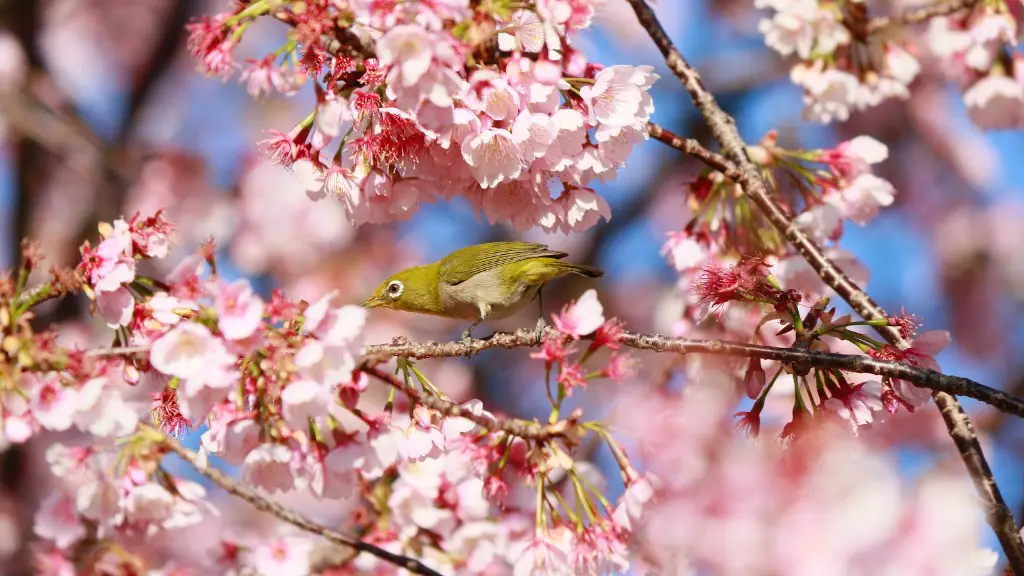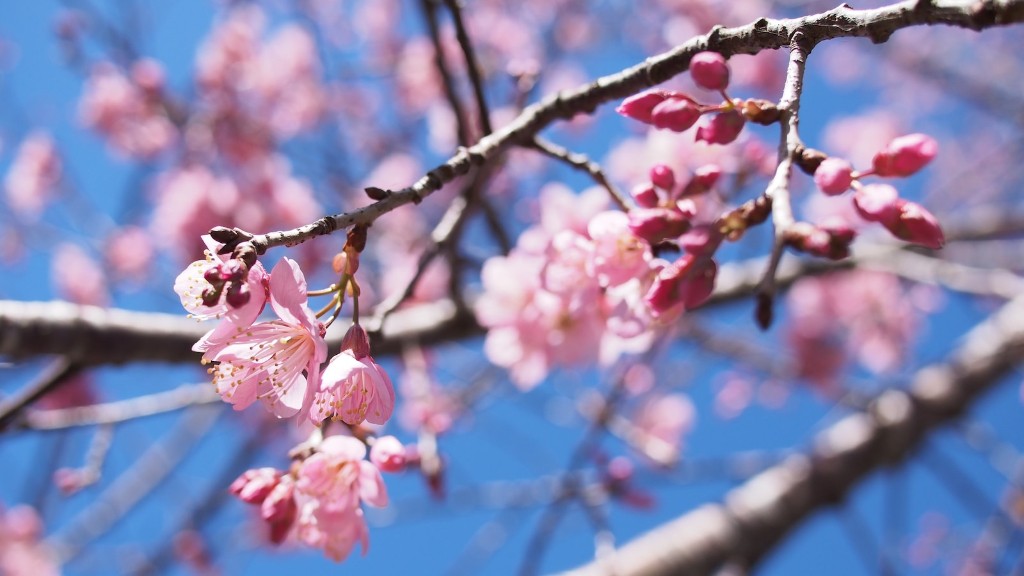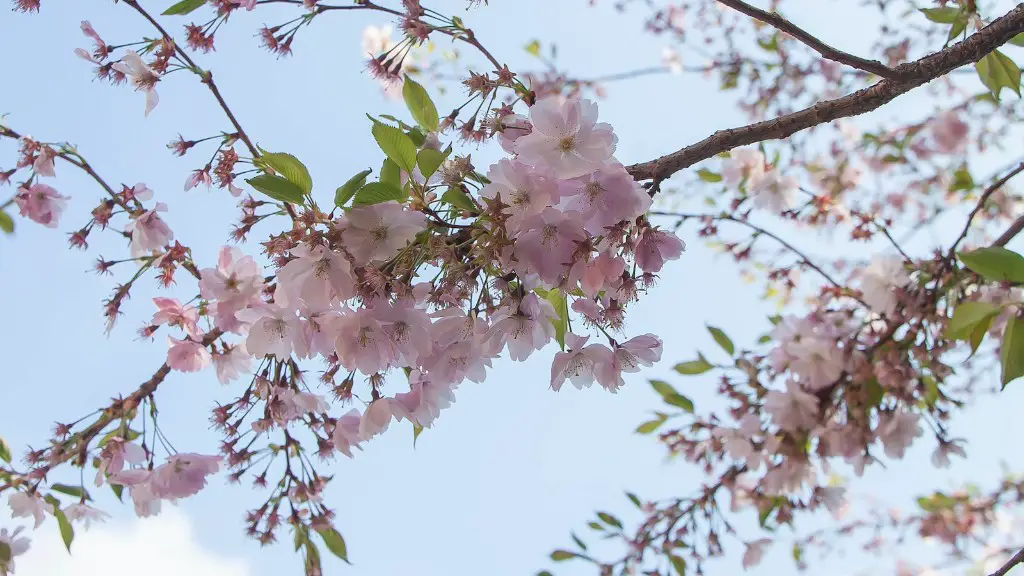Cherry blossom trees have been cultivated and revered for centuries, with their awe-inspiring beauty, delicate petals and symbolizing of a fresh start each year. But one of the most common questions about these classic springtime bloomers is: exactly how long does it take for a cherry blossom tree to mature and produce its signature pink and white flowers?
The simple answer is that how long it takes to grow a cherry blossom tree varies depending on the specific species and its environment. Some species of cherry blossom tree can take as long as eight to 10 years to reach maturity, while other species can produce flowers in just three or four years. And the right growing conditions—including the right climate, soil, pruning and fertilizing—can also affect how long it takes for a cherry blossom tree to reach full maturity.
“Cherry blossom trees are generally slow-growing,” says Robert Moreno, a horticulturist from the University of California at Davis. “It takes time for the tree to establish a root system and develop a strong stem and branches. That’s why it’s so important for growers to give the tree adequate time to mature.”
The most common types of cherry blossom trees are Japanese (or oriental) cherry, Yoshino cherry and Okame cherry. The Japanese cherry tree typically flowers three to four years after it has been planted, while the Yoshino and Okame produce flowers five to six years after they’ve been planted.
The best time to plant a cherry blossom tree is in the late winter or early spring. This will give the tree enough time to establish its root system before it needs to start flowering. It’s important to ensure that the tree has well-draining soil, plenty of sunlight, and sufficient space to fully mature.
Pruning is also important for encouraging healthy growth in cherry blossom trees. Pruning helps the tree focus its energy on producing leaves and flowers instead of continuously growing tall. Pruning should be done once or twice a year, depending on the tree variety, to keep the tree’s canopy healthy and open.
Fertilizing is also necessary to keep the tree in good health. Applying a slow-release fertilizer with a balanced ratio of nitrogen, phosphorus, and potassium can help promote healthy growth and flowering. Experts recommend fertilizing the tree three times a year—every spring, midsummer, and fall.
In addition to providing the right care and attention, patience is key when growing cherry blossom trees. It won’t happen overnight, but with the right conditions, perserverance and lots of patience, you can eventually reap the rewards of a mature and beautiful cherry blossom tree.
Weather Conditions
The weather can also have an effect on the time it takes for a cherry blossom tree to mature and develop flowers. Different regions will have varying climates and weather conditions, which could either expedite or slow the tree’s growth. Blooming and flowering typically occur sooner in milder climates, such as in California and the Mediterranean, due to the softer, subtler winter chill.
In temperate zones like the US, however, the harsher winter cold can cause the flowering period of cherry trees to be delayed. “In colder regions, cherry blossom trees experience a longer chill period before they reach the stage of blooming,” explains Moreno. “This can add a year or two—or sometimes even longer—onto the process of producing the full bloom.”
But while different regions will experience varying timelines in terms of how long it takes to grow a cherry blossom tree, one thing’s for sure: no matter where it’s planted, a cherry blossom tree always makes for a stunning spring season display.
Soil Quality
The soil quality is also an important factor in just how quickly a cherry blossom tree will reach maturity. A soil that’s too dry or too nutrient-deficient won’t be able to properly nourish the tree, which can impede its growth and flowering. That’s why experts suggest only planting cherry blossom trees in soil that is free of rocks and debris, with ample moisture and a neutral to slightly acidic pH balance.
“Healthy soil is vital for a cherry blossom tree to thrive,” says Moreno. “Make sure the soil is kept aerated and well-drained, especially during the wet spring season. And remember to mulch around the base of the tree, which will help maintain moisture and stop extra weeds or grass from growing near the tree.”
So don’t be in too much of a rush to get your cherry blossom tree to bloom. By providing the best soil and the right pruning, fertilizing and environment, you can ensure that your tree thrives in the years to come.
Container Planting
If you don’t have enough outdoor space for a full-sized cherry blossom tree, don’t worry: container-grown trees are becoming increasingly popular for small spaces like balconies, patios and even rooftops.
However, you still need to be mindful of the tree’s needs, despite its compact size. It’s best to select a container-friendly cherry blossom variety, such as the weeping cherry or Okame cherry, and to choose a container that’s at least 2 feet wide and 2 feet deep. Placing the container in a sheltered spot will also help reduce the risk of wind and temperature damage.
“When growing cherry blossom trees in containers, it’s especially important to monitor the soil for moisture,” says Moreno. “The container will dry out much faster than the ground in soil, so make sure to check the soil twice a week and water as needed. It’s also important to add new soil to the pot each season, as the old soil will begin to break down, which could prevent nutrients from reaching the tree’s root system.”
With the right care and attention, a container-grown cherry blossom tree can still produce beautiful blooms each spring. So don’t let the size of your yard or balcony impede you from enjoying the ethereal beauty of cherry blossoms in your space.
Symbolism
Cherry blossom trees have been adored throughout the centuries and have become a powerful symbol of life and love. For centuries, the cherry blossom has been a source of inspiration for poets, writers and painters. In Japan, the blooming of cherry blossoms is an eagerly awaited event, and the trees even feature in their ancient Imperial crest.
In many cultures, the cherry blossom also symbolizes transformation and renewal—in the way that its delicate pink petals fall away, making way for new growth. They also serve as a reminder that life is fleeting and that one must seize each moment and cherish it. For many, the sight of a cherry blossom is a reminder to celebrate life and all its wonders.
Due to their delicate beauty and powerful symbolism, cherry blossom trees have become a widely appreciated and treasured plant all over the world. What’s more, planting a cherry blossom tree in your own backyard adds a touch of grace and elegance to any living space. As long as you give your cherry blossom tree lots of love and care, it will reward you with years of delightful spring blooms.
Care and Maintenance
Finally, it’s important to remember that even when the tree reaches full maturity, care and maintenance are still necessary for keeping the tree healthy and productive. Pruning should still be done once or twice a year, depending on the tree variety, and fertilizing should still be done three times a year.
Watering is also a key part of keeping a healthy cherry blossom tree. It’s best to water the tree deeply but infrequently. An inch or two of water once or twice a week should provide enough moisture for the tree to stay healthy and hydrated. Additionally, during periods of drought or extreme heat, it can be beneficial to mist the tree or add mulch to retain moisture.
With the right knowledge, care and patience, anyone can enjoy the mesmerizing beauty and powerful symbolism of a cherry blossom tree in their own backyard. And despite the time it takes for the tree to reach full maturity, it’s always worth the wait.




